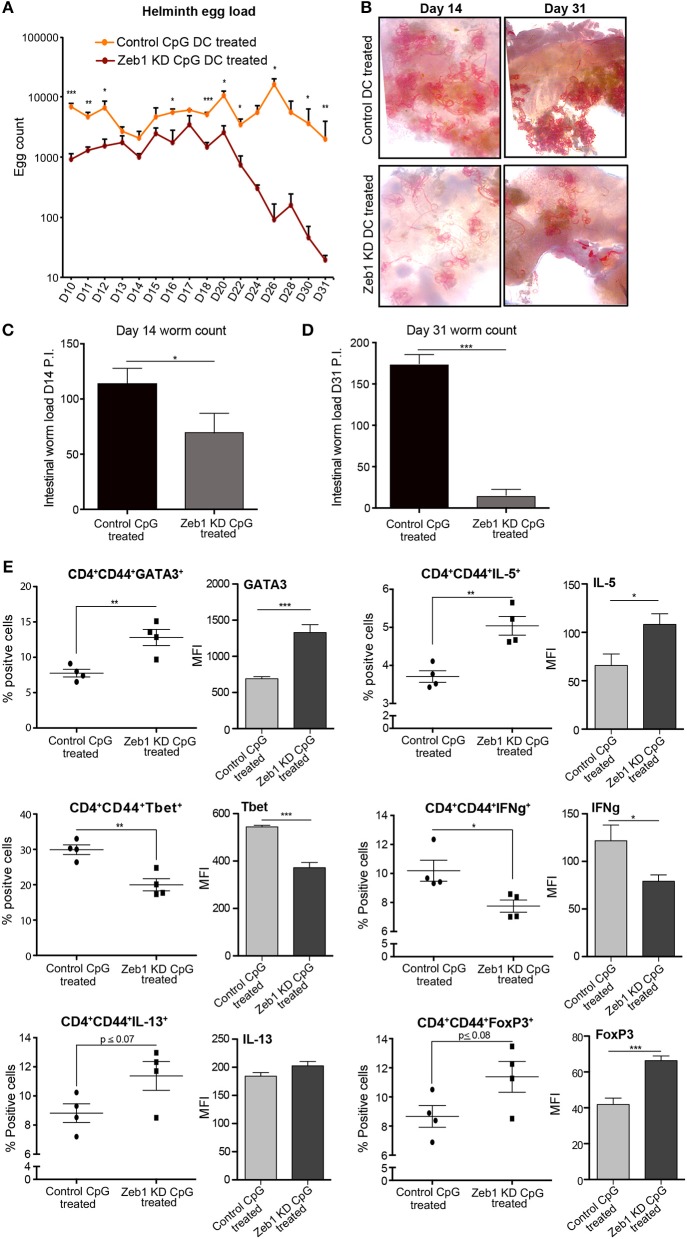Figure 5.
Adoptive transfer of CpG activated Zeb1 KD cDC1 MutuDCs in helminth-infected mice enhances worm clearance by increasing Th2 responses. (A) Line-graphs depicting the Helminth egg counts in the feces of CpG pulsed Zeb1 KD CD8α+ cDC1 MutuDCs and control DC treated mice from D10 to D31. The mice were infected with H. polygyrus larvae at D0 and treated with CpG pulsed control and Zeb1 KD CD8α+ cDC1 cells consecutively at D7, D9, and D11. The egg counting was started from D10 till D31. At day 9 there were no eggs detected in feces of animals n = 10. (B) Representative intestinal sections of helminth infected mice at D14 and D31 after helminth infection and treatment with CpG pulsed Zeb1 KD and control DC treated animals n = 5. (C) Intestinal worm load at day 14 in mice adoptively treated with CpG activated Zeb1 KD and control DCs n = 5. (D) Intestinal worm load in mice adoptively treated with CpG activated Zeb1 KD and control DCs at day 31 after infection n = 5. (E) Scatter-plots for Th1, Th2, and Treg markers like GATA3, IL-5, Tbet, IFNγ, IL-13, and FoxP3 from detailed immune profiling of CD4+CD44+ effector Th cells isolated form mesenteric lymph nodes of helminth infected animals and treated with activated Zeb1 KD and control DCs. The corresponding panels also depict bar plots for MFI shifts for each marker in CD4+CD44+ effector Th cell population n = 5. p-values are calculated using two tailed unpaired student's t-test, error bars represent SEM. * ≤ 0.05, ** ≤ 0.01, *** ≤ 0.001.

